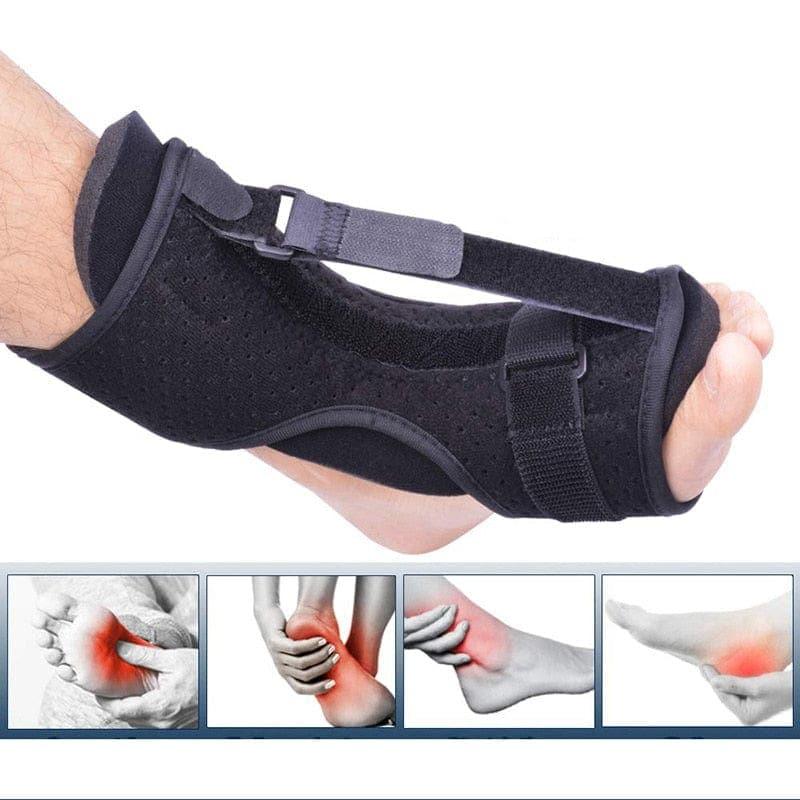If you’ve ever felt a stabbing pain in your heel the moment you step out of bed, chances are you’ve crossed paths with plantar fasciitis. It’s one of those conditions that can quietly creep into your routine, making every step feel like a chore. And while it’s common—especially among runners, teachers, and anyone who’s on their feet all day—managing it can feel like a puzzle.
So, what is plantar fasciitis exactly?
Plantar fasciitis is inflammation of the thick band of tissue (the plantar fascia) that runs across the bottom of your foot and connects your heel bone to your toes. The pain is usually sharp and most intense with your first steps in the morning or after long periods of sitting.
What helps relieve plantar fasciitis?
One of the first questions most people ask is: Does anything really help plantar fasciitis? Yes—and thankfully, quite a few things.
-
Supportive footwear is a must. Shoes with good arch support and cushioning are key to relieving strain on the plantar fascia.
-
Braces and splints, especially ones designed to be worn at night, gently stretch the foot and can significantly reduce morning pain.
-
Ice therapy, stretching exercises, and toe separators can also provide relief.
Many people also find that simply reducing time spent on their feet gives the tissue a chance to heal.
Is it better to keep walking with plantar fasciitis?
Here’s the tricky part: yes and no. Gentle movement is good because it promotes blood flow and healing. But long walks on hard surfaces? Not so much. Walking barefoot or in unsupportive shoes can aggravate your condition.
If you’re trying to stay active, try low-impact activities like swimming or cycling until the pain subsides.
Why is plantar fasciitis so hard to treat?
Plantar fasciitis can be stubborn. Why? Because we use our feet constantly. Even with rest and treatment, the tissue can get re-irritated easily.
Also, many people ignore the early signs or delay treatment, which allows the inflammation to become chronic. Healing takes time, and consistency with your treatment plan is key.
Should you lay in a certain position with plantar fasciitis?
There’s no perfect sleeping position, but lying on your back with a pillow under your calves can help. More importantly, how you support your feet while you sleep plays a bigger role.
That’s where night splints and braces come in.
What’s the best thing to wear at night for plantar fasciitis?
Enter: the plantar fasciitis night brace.
These braces keep your foot gently flexed while you sleep, preventing the fascia from tightening overnight. It might feel strange at first, but users often report reduced pain in the morning after just a few nights of use.
If you’re wondering how long you should wear a plantar fasciitis brace, most podiatrists recommend using it nightly for 1–3 months, depending on your symptoms.
Do toe spreaders help?
They can! Toe spreaders work by realigning the toes and relieving tension along the plantar fascia. They’re especially helpful if you have other foot issues like bunions or overlapping toes.
They’re not a magic fix on their own, but when used with a brace and proper footwear, they’re a useful part of a well-rounded treatment plan.
What not to do with plantar fasciitis
Sometimes what you avoid is just as important as what you do:
-
Don’t ignore the pain or “walk it off”
-
Don’t wear flat or unsupportive shoes
-
Avoid high-impact workouts
-
Skip barefoot walking—even around the house
Being mindful of your foot health can go a long way in managing this condition.
Final Thoughts: Be Kind to Your Feet
Plantar fasciitis doesn’t heal overnight—but the good news is, with the right tools and habits, it does heal. If you're consistent with rest, support, and wearing your brace as recommended, you're likely to see progress within weeks.
And remember: your feet carry you through life. Show them a little love, and they’ll thank you every step of the way.

